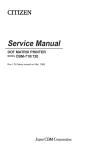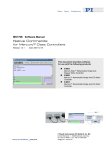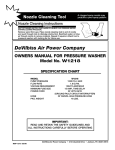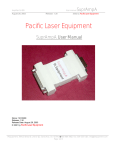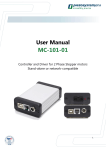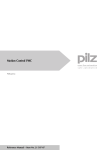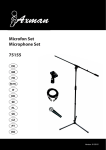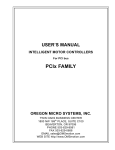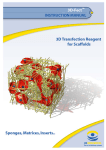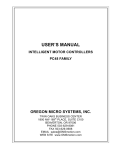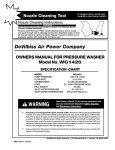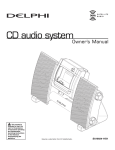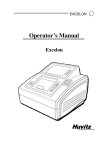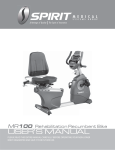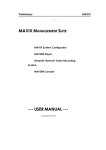Download User Manual - Pacific Laser Equipment
Transcript
Motor controller 4ch User manual November 19, 2002 Release: 1.30 C-400 2002 by Pacific Laser Equipment Pacific Laser Equipment C-400 User Manual Name: C-400UM Release: 1.30 Release Date: November 19, 2002 © 2001 by Pacific Laser Equipment PLEquipment, 3941 S. Bristol St. Unit D-122, Santa Ana, CA. 92704, ( 509-355-5155, Fax: 509-355-5155, Email: [email protected] Page 1 of 21 Motor controller 4ch User manual November 19, 2002 Release: 1.30 C-400 2002 by Pacific Laser Equipment Table of contents: 1. Introduction 1.1 Product description 1.2 Labels 3 1.3 Operation 2. Block diagram 6 3. Technical specs 7 4. Test and troubleshooting 8 5. Command structure 5.1 Single commands 5.2 Compound commands 5.3 Macro commands 5.4 Reporting commands 9 6. Cable connections 10 7. Software 11 8. Commands 12 9. LabView 9.1 VIs (Drivers) 9.2 Example programs 13 10. OEM versions 18 PLEquipment, 3941 S. Bristol St. Unit D-122, Santa Ana, CA. 92704, ( 509-355-5155, Fax: 509-355-5155, Email: [email protected] Page 2 of 21 Motor controller 4ch User manual November 19, 2002 Release: 1.30 C-400 2002 by Pacific Laser Equipment 1. Introduction 1.1. Product description. The C-400© is a unique 19inch rack mountable 4ch DC servo motor controller with integrated DC motor amplifiers on board. It consists of precision amplifiers, power supplies, insulation transformers, rectifiers, and voltage regulators and TTL logic built around the Mitsubishi M 50734SP processor. All this is compactly packaged in a 6-part 19 x 3.5 x 10" rack-mount anodized aluminum case. The DC voltage output can deliver up to +/-12V making the controller compatible with most mechanics from: Newport, PI, OptoSigma and ThorLabs. PC control is done via a null modem serial-interface cable that can be purchased as a STANDARD. On the rear panel the user has access to the AC power plug and the ON / OFF switch. The fuses are located inside the 19” chassis. The controller is delivered with this User Manual, power cord and one null-modem serial cable. This manual is provided as an aid in operating and programming the C-400© DC-Motor Controller. This servo-controller is intended for motion control in research and industrial applications providing in a single package a complete stand-alone control system for the smaller DC servo motors used in highprecision positioning systems. The C-400© utilizes quadrature encoder signals for position feedback and depending on the resolution of the encoder scale, incremental resolutions of 50nm to 0.1µm can be achieved. The C-400© provides servo-control of position, velocity, and acceleration. Although each parameter is programmable, each is also set to a programmable default value upon power-up. Using the built-in commands and features, the user will very quickly be able to command the motor to move to any desired position. During the motion the velocity and acceleration will be controlled in accordance with the most recent settings of the controller parameters. It is not necessary to set them up anew for each move. The starter package comes with all connecting cables and software necessary for immediate operation. Each axis has provision for two limit switches, in addition to a differential quadrature encoder input with index capabilities. For highest precision in a homing application, motion is commanded until the reference switch is encountered, then continues at a slower rate until the encoder index is found. With this procedure, the home position may be repeated to an accuracy of one encoder count, or the ultimate accuracy of the system. All limit and reference switch inputs are sensed through line receivers with 1 volt of hysteresis for noise rejection. The encoder inputs use differential line receivers with 300 mV of hysteresis. They may be used with single encoders, as well. A capture/compare circuit is used to sense any change in the state of the limit and reference switches. When any one of them changes, a maskable interrupt is generated. These are several additional sources of interrupt, including excessive error, encoder error index, and absolute and relative position breakpoints. PLEquipment, 3941 S. Bristol St. Unit D-122, Santa Ana, CA. 92704, ( 509-355-5155, Fax: 509-355-5155, Email: [email protected] Page 3 of 21 Motor controller 4ch User manual November 19, 2002 Release: 1.30 C-400 2002 by Pacific Laser Equipment 1.2. Labels. Rear panel labels indicate the functions for every connector, the unit serial number and display the power requirements. 1.3. Operation. Controller operates only controlled by a host PC via the serial cable provided with the unit. The operating voltage for the DC motors may change in the range from –12V to +12 V. Serial communication is set by factory to 9600 baud, 8 data, 1 stop, no parity. Internal buffers are used, so there is no handshake required. Use a null modem cable for connection. Setting Motion Control Parameters Prior to commanding the connected motor or stage to move, the servo-control as well as the velocity and acceleration values have to be set. If you are using host software with valid configuration files or the C-400© is set up to default to correct parameter settings, then you may skip this section. Each stage could require its own set of parameters for proper operation. They can be modified as appropriate for the actual setup. The settings are not particularly critical, so you can vary parameters by +/- 50% to achieve better settling performance. Operating Motors and Stages Type MN<return>. C-400© is now on-line and ready for motion. If the motor oscillates or begins to "run away" when the MN command is given, remove power and read further before continuing. Enter MR1000 <return>. The motor should move 1000 encoder counts in the positive direction. When it stops, enter TP <return>. The position should be very close to 1000. Now enter TT,TE <return> in order to read the target and the position error. This reports where the motor should be (1000) and the distance of the actual position from this target. If the reported position was 998, then the reported error will be 2. If the reported position was 1002, the reported error will be -2. To read all values at the same time, enter TT,TP,TE <return>. Now all three values are reported. Now enter MR-1000 <return>. The motor should return to zero, or home, position. Press <return> again. The motor should move another 1000 counts in the negative direction. Press it again and again. The motor should move each time. Now try GH <return>. The motor should return to the position it occupied when power was applied. Now for advanced programming: enter MR1000,WS100,TE <return>. The motor should move 1000 counts positive. When it arrives at this position, it should report how close it came to the target. For a longer move, enter MR100000<return> and verify that the motor has moved that distance. Press the <return> key again and see that the motor moves the same amount in the same direction. Press it again and again. A GH<return> command will return to the previously defined HOME position. While in motion, we could have entered TV and pressed the <return> key as often as desired to read the actual number of encoder counts moved during the last 0.4 seconds. Set the acceleration to a lower value, such as SA10000 <return> and see the velocity increase and decrease over a longer period. Set the velocity to various values and issue commands to move to various positions using either MA or MR commands. Move the stage some distance away from the end, say 100,000 counts, and try this: MR50000,WS100,WA500,MR-50000,WS100,WA500,RP9 <return>. The stage should cycle back and forth 50,000 counts with a delay of a half-second at each end. It should do this ten times—once by command followed by nine repetitions. PLEquipment, 3941 S. Bristol St. Unit D-122, Santa Ana, CA. 92704, ( 509-355-5155, Fax: 509-355-5155, Email: [email protected] Page 4 of 21 Motor controller 4ch User manual November 19, 2002 Release: 1.30 C-400 2002 by Pacific Laser Equipment Multi-Axis Control The axis number will proceed whenever a specific axis needs to be moved or read. Example: 1MR50000, 2MR-30000, 3TP, 4GH. Default Values C-400© has been designed to be as easy to use as possible. When shipped, the C-400© comes with (factory) default settings. These settings can be read and changed using the Read_C400.vi and the SET_C400.vi In most cases, the factory default values will be appropriate for the application. Limit Sensors During operation, the limit sensors (or switches) are used to stop the motion at the end of the allowable travel range. Only one of the two switches will interrupt motion in a given direction. When connecting other motor drives or mechanics, the correct limit switch wiring must be determined. To do this, set the system into a safe position, set a low velocity with the SV command, begin motion with an MR, MA or FE command and enable limit switch operation with the LN command. While the motor is moving, actuate the limit switch toward which it is moving. If the motor stops, that is the correct switch to connect at the end of desired motion for that direction. If the motor does not stop, actuate the other limit switch. If the motor still does not stop, remove power and read further. Each axis has provision for two limit switches and a reference switch, in addition to a differential quadrature encoder input with index capabilities. For highest precision in a homing application, motion is commanded until the reference switch is encountered, then continues at a slower rate until the encoder index is found. With this procedure, the home position may be repeated to an accuracy of one encoder count, or the ultimate accuracy of the system. All limit and reference switch inputs are sensed through line receivers with 1 volt of hysteresis for noise rejection. The encoder inputs use differential line receivers with 300 mV of hysteresis. They may be used with single encoders, as well. A capture/compare circuit is used to sense any change in the state of the limit and reference switches. When any one of them changes, a maskable interrupt is generated. These are several additional sources of interrupt, including excessive error, encoder error index, and absolute and relative position breakpoints. LM629 Data 1 Input register 6 (Read only) Software reset 7 (Read only) Interrupt register 2 (Read only) Limit switch register 3 (Read only) Configuration and output 6 (Read only) LM629 Commands 0 (Desired channel selected by configuration register bits 6, 7, address 6) © The C-400 controller uses National Semiconductor LM629 integrated circuits to perform the servo control functions. If the user wishes to program them directly, the programming is done exactly as described in National's programming manual. For those users wishing to use the C-400© in an interactive manual mode, joystick operation is possible also as an add-on option. PLEquipment, 3941 S. Bristol St. Unit D-122, Santa Ana, CA. 92704, ( 509-355-5155, Fax: 509-355-5155, Email: [email protected] Page 5 of 21 Motor controller 4ch User manual November 19, 2002 Release: 1.30 C-400 2002 by Pacific Laser Equipment 2. Block diagrams 2.1 General diagram. 2.2 Power supply block diagram PLEquipment, 3941 S. Bristol St. Unit D-122, Santa Ana, CA. 92704, ( 509-355-5155, Fax: 509-355-5155, Email: [email protected] Page 6 of 21 Motor controller 4ch User manual November 19, 2002 Release: 1.30 C-400 2002 by Pacific Laser Equipment 3. Technical specs Number of motor channels Maximum output voltage Maximum current Digital I/O channels Control modes Servo algorithm Trajectory generation 1 to 4 - 12V to +12V 2 A peak 8 inputs, 5 outputs Position and velocity Proprietary Trapezoidal Incremental, single-ended or differential with index Position encoder compatibility 1 MHz maximum Communication RS-232 Output type Analog 0 to +/-12V Control language Two letter mnemonics, LabView 6.1 drivers, Acceleration/deceleration, velocity, position, digital filter gains, derivative sampling interval, absolute and relative Programmable functions breakpoint positions, integration limit, interrupt mask, maximum allowable able error stop mode Dynamic range 30 bits, (+/- 1,073,741,824) Interrupts Position breakpoints, limit switches, error limit Addressing Switch selectable. I/O mapped Physical interface, 25-pin and 9-pin Sub D connectors motors & I/O Analog input: 0 to 5V (Optional through the I/O port). Display: Power out: Power requirements: Dimensions: Enclosure LED for internal power supply. 2.5W. 120V AC, 100mA. 5 x 2 x 3” 19” Rack. Aluminum (Black anodized or Aluminum) PLEquipment, 3941 S. Bristol St. Unit D-122, Santa Ana, CA. 92704, ( 509-355-5155, Fax: 509-355-5155, Email: [email protected] Page 7 of 21 Motor controller 4ch User manual November 19, 2002 Release: 1.30 C-400 2002 by Pacific Laser Equipment 4. Test and troubleshooting Attention: The unit uses AC 120V. This is a dangerous voltage. Front and Back Panel Elements Connectors : RS-232 (1) STAGES (4) AC 120V (1) Sub-D 9(m) Serial network input Sub-D15(f) Motor connector Standard AC 3 pin receptacle. Indicators: Power Orange LED on front panel. (1) Fuses The fuses are located inside the box. When replacing please use slow-blow 100mA. AC Power Make sure that the AC power used is always 120V. Test To test communication with the C-400© connect all cables and power-up than send the TP command from any program capable to send ASCII commands via the COM port. If the system is ready for operation the controller will respond with the encoder read-out. Trouble Shooting Problem (#1): The controller communicates and reports position values (TP), but the connected stage or motor does not move. Cause (#1): The 12V could be missing. Problem (#2): Front panel LED is OFF. Cause (#1): The FUSE could be blown. There could be other instances when a failure mode could appear but that can only be determined on a case by case basis. 5. Command structure Over 40 commands are available for programming the C-400©. Use these commands to control motion and to acquire reports regarding motion control parameters and status. The command structure has been designed to minimize the effort required to use the C-400©. Commands can be executed in various ways: as Single Commands One function, executed immediately as Compound Commands Multiple functions, executed immediately in sequence as Macro Commands Command sequences, stored for later execution. PLEquipment, 3941 S. Bristol St. Unit D-122, Santa Ana, CA. 92704, ( 509-355-5155, Fax: 509-355-5155, Email: [email protected] Page 8 of 21 Motor controller 4ch User manual November 19, 2002 Release: 1.30 C-400 2002 by Pacific Laser Equipment 5.1. Single Commands A single command is executed immediately after a carriage return is received and will be repeated each time a carriage return is received, until a different command is entered. Examples: MR2000 <return> Move motor 2,000 steps relative to the present target MN <return> Set motor in ON state TP <return> Report (tell) position for motor MA20000 <return> Send motor to absolute position 20,000 Both uppercase and lowercase characters are valid, and spaces are allowed. 5.2. Compound Commands A compound command is a series of single commands separated by commas. In this way, it is possible to string together several commands before terminating them with a carriage return. These multiple commands will then be executed sequentially. The syntax for a compound command is: CMD[n], CMD[n], ...,..., <return> Example: mr5000,ws100,wa500,ma12000,ws100,wa800,tp<return> A compound command, such as in the following example, may be entered as one program line. It instructs the motor to move 1,000 encoder counts in the positive direction, wait in that position 500 milliseconds, return to the original position, wait 1 second, and then repeat that sequence 5 times. Example: "MR1000,WS100,WA500,MR-1000,WS100,WA1000,RP5" <return> Once this compound command is entered, it remains in the buffer until replaced by another command and can be re-executed by sending a carriage return (pressing <enter>). 5.3. Macro Commands Macros can be a most powerful tool for the programmer. A macro command is a grouping of commands to form a short program, stored under a macro number. To use macros to programming the C-400© controller, insert an MDn (MacroDefinition) command as the first instruction on the line and follow it by a comma and a comma-separated command string. The syntax for macro commands is: MD(macro#), followed by a compound command string. Example: MD3,MR1000,WS100,MR-1000,WS100,RP5 <return> In this example, MD3 defines macro #3. To call up (run) this macro, just issue the command EM3. Unlike MD# commands, EM# commands may be used in compound commands and, with some restrictions, in other macro definitions. A macro command can call other macros, but if the calling macro is to continue after the called macro completes, the called macro must not contain any macro calls. For example, MC1 could call MC2, but MC2 could not then call MC3 and still be able to return to complete the remainder of MC1. Example: MD1,EM2,EM3,EM4,EM5,EM6 5.4. Reporting commands Reporting commands are commands, which cause the C-400© controller to send a string of data, be it a position, servo-control parameter, help or other information. These commands are easy to remember as they usually begin with a T (tell). For example, TT (Tell Target). PLEquipment, 3941 S. Bristol St. Unit D-122, Santa Ana, CA. 92704, ( 509-355-5155, Fax: 509-355-5155, Email: [email protected] Page 9 of 21 Motor controller 4ch November 19, 2002 User manual Release: 1.30 C-400 2002 by Pacific Laser Equipment 6. Cable Connections There are seven connectors on the C-400© to provide access to its functions. The motor connections are included in the D-sub 15-pin connector with the encoder and limit switch signals. The 9-pin sub-D connector is wired straight to the RJ-11 connector. The DSub-15 connectors are the motor or stage connection. Compatible with NEWPORT, PI and ThorLabs stages and motor drives. PLEquipment, 3941 S. Bristol St. Unit D-122, Santa Ana, CA. 92704, ( 509-355-5155, Fax: 509-355-5155, Email: [email protected] Page 10 of 21 Motor controller 4ch User manual November 19, 2002 Release: 1.30 Windows Library (DLL) C-400 2002 by Pacific Laser Equipment 7. Software On the CD provided the user will find the C812Lib202.dll file under the \DRIVERS directory. LabView Driver Library See content in the \DRIVERS folder on the CD. Command Reference All C-400© commands use two-letters to identify the type of operation followed by pertinent data values, if necessary. For example, TP by itself is adequate to display the motor position, but MR alone would be useless, because the system would not know how far you wished to move. All commands are checked for acceptability as they are entered. MR, for example, must be followed by a minimum of 1 and a maximum of 9 digits to accommodate the allowable range of motion. C-400© commands are arranged by group for the following discussion. Motion and sequencing commands AB Abort motion DH Define home GH Go home MN Motor on MF Motor off MR Move relative MA Move absolute RP Repeat from beginning of line WA Wait absolute time WS Wait stop FE Find edge (find limit) Parameter setup commands SV Set Velocity SA Set Acceleration SM Set maximum following error LN Limit switch operation ON LF Limit switch operation OFF Reporting commands Report Identifier CS Report checksum C: TI Tell iteration number X: TM Reports all listed macro commands TY Tell programmed velocity Y: TL Tell programmed acceleration L: TE Tell error (distance from target) E: TP Tell position P: TT Tell target position T: TV Tell actual velocity V: PLEquipment, 3941 S. Bristol St. Unit D-122, Santa Ana, CA. 92704, ( 509-355-5155, Fax: 509-355-5155, Email: [email protected] Page 11 of 21 Motor controller 4ch User manual November 19, 2002 Release: 1.30 C-400 2002 by Pacific Laser Equipment 8. Commands MOTION and SEQUENCING COMMANDS AB Abort motion This command stops the motor at the present position; any further motion requirements are ignored. The target position is changed to be equal to the present position. FEn Find Edge (n = 0,1) This command is used to move the system to a given initial position. The direction of motion depends on the value of n. The target is set to + or - 16,777,013 depending on the value of n. The motor runs at the programmed speed until the limit switch is activated. Example: FE0 <return> causes motor to move in a positive direction until the reference input changes state. If the reference input is high when the command is issued, the motor runs toward the positive limit until the input changes to low, and vice versa. FE1 <return> causes the motor to move in a negative direction until the reference input changes state. These commands assume that your system has the reference input line connected to a reference switch. FE can be useful in calibrating the home position on start-up or for simply slewing long distances at the most recent velocity setting. If limit switches are not in use, a command string such as "FE0,WS100,WA500,DH,MN" could be used on startup to find the Home position value of a mechanical stop. This command tells the motor to run toward a target value of +1,000,000,000 until stopped. When the motor encounters the mechanical stop, the following error will rise quickly, triggering a halt because of an Excessive Error condition. (See SM command.) This error halt will disable the motor loop, so the MN command at the end is required to maintain the new position against any forces that might be attempting to move it. It may be desirable to use the SM command to set the maximum allowable following error to a low value at the start of motion. Do not forget to restore it to a better working value after the operation is complete. Note: This procedure requires that limit switches not be in use. If they are in use, they will automatically stop motion without causing an Excessive Error condition. GH Go Home The Go Home command causes the motor to move to the absolute zero position. Equivalent to an MA0 (Move to zero position) command. Example: GH <return>: Moves motor to zero position. MAn Move Absolute (- 1,073,741,823< n < 1,073,741,823) This command generates a motion to the absolute position n. The zero, or home position, may be redefined by the DH (Define Home) statement. If not otherwise defined, it is the position where the controller was when powered on. MA0 <return>: Tells motor to go to Home position MRn Move Relative This command generates a motion of relative distance of n counts in the specified direction from the current motor position. n may be either a positive or negative number. The resulting absolute target position must be between + and - 1,073,741,823. Examples: MR5000 <return>: Motor moves 5,000 counts in positive direction. MR-330 <return>: Motor moves 330 counts in negative direction. MR2000,WS100,MR-1200 <return>: PLEquipment, 3941 S. Bristol St. Unit D-122, Santa Ana, CA. 92704, ( 509-355-5155, Fax: 509-355-5155, Email: [email protected] Page 12 of 21 Motor controller 4ch User manual November 19, 2002 Release: 1.30 C-400 2002 by Pacific Laser Equipment MF Motor OFF When this command is issued, the motor is no longer held in position (servocontrol is turned off) and may be moved freely. The MF command is used to prevent unwanted movement or to allow for manual positioning of the unit. When manually positioned, however, the motor position is still monitored in the MF status and may be reported by the TP command. The opposite command is MN (Motor ON). Use caution when turning the motor back on. The target position remains the same as when the MF command was issued and the motor will try to return there unless the target position is redefined. To set a manually selected position as the new target position before putting the motor back in the MN (Motor ON) state use the DH (Define Home) or AB (Abort) command as follows: AB,MN <return> DH,MN <return> The DH command is also useful for determining the encoder resolution. Issue the MF command, manually position the motor/encoder at some known angle, issue a DH command to set the position to 0, then turn the motor/encoder one revolution. Now the TP command will report the number of encoder counts/ revolution. PI stages have incremental encoders with from 2000 to 4000 counts/ rev. MN Motor ON This is the normal system control mode, in which C-400© controls the axis position continuously. Any deviation between actual and target position causes the motor to be driven toward the target, possibly with maximum force, depending on the distance moved during the motor off condition. Use caution when turning the motor back on. C-400© keeps track of both the motor and target position even when in the MF state. When it receives an MN command, The controller will try to return the motor to the old target, unless the target has been redefined. Example: MN <return> RPn Repeat (0 < n < 65,535) This command causes the command string to repeat n times. If n is not specified, the command(s) in the string are repeated 65,536 times. The repeat loop may be interrupted by sending any character. This character should not be the first character of a new command, because it will be discarded. Example: TE,WA500,RP99 <return> Will display the distance to the target every 500 milliseconds (0.5 second) for a total of 100 times. WAn Wait (0 < n < 65,535) This command inserts a wait period of n milliseconds before going to the next command. Example: MR2000,WA3000,MR-2000 <return> This command line will move the motor by 2,000 steps, then, 3 seconds after the start of the move, the motor will move back 2,000 steps. Note that the wait period of 3 seconds includes the time the motor is moving. If the motor is to be at rest for 3 seconds, an additional command must be inserted to prevent the wait interval from beginning until the motor has completed it's motion: MR2000,WS100,WA3000,MR-2000 <return> WSn Wait for motor stop The WS command waits until the motor has reached the end of its trajectory and then waits for another n milliseconds before continuing to the next command. Example: MR5000,WS100,TE <return> This command line moves the motor for 5000 counts and then waits for 100 ms after the motor has completed the move before executing the TE command (Tell error) and reporting the error. PLEquipment, 3941 S. Bristol St. Unit D-122, Santa Ana, CA. 92704, ( 509-355-5155, Fax: 509-355-5155, Email: [email protected] Page 13 of 21 Motor controller 4ch User manual November 19, 2002 Release: 1.30 C-400 2002 by Pacific Laser Equipment PARAMETER SETUP COMMANDS DH Define Home Defines the current motor position as the zero position (Home position). Example: DH <return>: Sets the current motor position to 0. SGn Sets the static gain (0 < n < 32,767) This command sets the slope of the proportional relationship between the position error and the motor voltage. The higher the gain value set, the greater the stiffness of the position coupling, meaning that a small error value causes a proportionally larger motor current driving the motor towards the target. The default gain value usually ensures stable operation. The optimum value depends on friction, inertia, motor power, and the resolution of the encoder. It must be determined by the user. If the error reported by an axis after completing its motion is excessive, the gain value may be increased in small increments until the error is within acceptable limits. If the axis becomes unstable and begins to oscillate, the gain must be reduced until the oscillation stops. Example: SG80 <return> Sets a gain of 80 SAn Set Acceleration (0 < n < 2,000,000) Sets the maximum acceleration rate in encoder counts per second squared. Acceleration values are in the range from 100.000 to 800.000. The default value is set to 150.000. SVn Set Velocity (0 < n < 500,000) Causes the motor to run at maximum velocity of n counts/s for subsequent motion commands. The value is given in encoder counts per second. If the torque load changes on the motor, the controller attempts to maintain the velocity by varying the motor current. Example: SV40000 <return> Sets the velocity of motion to 40,000 counts per second. SMn Set Maximum following error (0 < n < 32,767) Sets the maximum allowable error between the dynamic target and the actual position. May be changed as often as desired to provide maximum protection to the system. The normal following error can be monitored during motion with the TF command. For maximum system safety, use the SM command to limit following error to a value slightly above that required for normal operation. LN Limit Switch operation ON Enable software limit switch operation. When a limit switch is encountered during motion, motion is halted and is no longer possible in that direction as long as the switch remains closed. The target is changed to the position at which the limit switch was encountered. Movement in the reverse direction is not affected. LF Limit switch operation OFF Disables software limit switch operation. C-400© also has logic circuitry to disable motion in the direction of a hardware limit switch when the switch is actuated, whether or not the software limit switch operation is enabled. The LN and LF commands affect only the software. The LF command should only be used when hardware limit switches are not installed. PLEquipment, 3941 S. Bristol St. Unit D-122, Santa Ana, CA. 92704, ( 509-355-5155, Fax: 509-355-5155, Email: [email protected] Page 14 of 21 Motor controller 4ch User manual November 19, 2002 Release: 1.30 C-400 2002 by Pacific Laser Equipment REPORTING COMMANDS Reporting commands cause the C-400© controller to emit a string of data. These commands are easy to remember as they usually begin with a Tell statement. TG Tell gain Reports programmed SG values This value can be changed with the TI Tell Iterations This command reports the state of the repeat counter. It is useful for determining the number of times a repetitive action has taken place. Example: MR100,WS100,WA250,TI,RP99 The motor will make repetitive moves of 100 steps, with a delay of .25 seconds between steps, for a total of 100 times. The TI command will report the number of iterations remaining to be performed after each iteration. TP Tell Position Tell Position reports the absolute position of the motor. TP may be used to monitor motion during both motor on and motor off status. TT Tell Target Reports target position. This is the absolute position to which the servo-loop will try to drive the motor any time the MN (Motor ON) state is in effect. TY Tell programmed velocity Reports the Programmed Velocity value. This value can be changed with the SV command. The values reported with the TV and TY commands should differ by only a few counts. Command: TY <return> Report: "Y:+0000020000" TV Reports actual velocity Command: TV <return> Report: "V:+0000020006" CS CheckSum Calculates and reports the check-sum. This command is useful to test the integrity of the firmware. The reported value should be the same every time. Report: "C:50EE_FBF2"CRETX TL Tell acceLeration Reports programmed acceleration value. Command: TL<return> Report: "L:+0000170000" TF Tell Following error Reports the difference between the dynamic target and the actual position. During motion, it is normal for the actual position to lag behind the target position by some amount, usually dependent on the programmed velocity. If the velocity is higher than physically possible for the system, or if an obstruction has been encountered, the Following Error will increase. If the obstruction is temporary, the servo-action will attempt to reduce the error to zero when the obstruction is removed. If the condition is not temporary, the error will increase until the programmed limit is reached. Command: TF <return> Report: "F:+0000000117" TD Tell deceleration Reports programmed SD values Command: TD <return> Report: "N:+0000126317" PLEquipment, 3941 S. Bristol St. Unit D-122, Santa Ana, CA. 92704, ( 509-355-5155, Fax: 509-355-5155, Email: [email protected] Page 15 of 21 Motor controller 4ch User manual November 19, 2002 Release: 1.30 C-400 2002 by Pacific Laser Equipment MACRO COMMANDS MDn Macro Definition (1 < n < 16) This command is used to define a new macro command. Defining more than one macro with the same value of n, will simply result in the loss of all but the last macro so defined. To define a macro, choose the desired macro number in the allowable range, enter MD followed by this number and a comma and then type the command or command sequence just as you would if running it directly. Examples: MD1,MR50000,WS100,GH <return> Defines macro #1 MD2,TT,TP <return> Creates a macro command to Tell Target, then Tell Position. Defines macro #2. EM2 <return> Executes macro #2, (Same as entering TT,TP<return>) EMn Execute Macro Command n (1 < n < 16) This command is used to run a previously defined macro command. Example: EM3 <return> Execute macro #3 RM Reset Macro Used only to initialize the memory reserved for macro commands. It clears the macro storage. Example: RM <return> Removes all stored macros Note: This command needs 5 seconds for execution. During that time no communication is possible. UTILITY COMMANDS RT Reset Restarts controller as if from a power-off condition. All values are restored to their defaults. EN Echo on Enables echoing of command characters as they are entered. Each character received is echoed unchanged. This is a very useful feature when the Suprmtr6 is being controlled from a terminal. EF Echo off Disables echoing. When control is from a computer program, it is sometimes easier to program if there is no echo, unless the program uses it for verification of successful transmission. HE Help Reports all available commands PLEquipment, 3941 S. Bristol St. Unit D-122, Santa Ana, CA. 92704, ( 509-355-5155, Fax: 509-355-5155, Email: [email protected] Page 16 of 21 Motor controller 4ch User manual November 19, 2002 Release: 1.30 9.1 VIs - Drivers – C-400 2002 by Pacific Laser Equipment 9. LabView The following Vis are provided on the enclosed CD. They are based on the C812Lib.dll file. PLEquipment, 3941 S. Bristol St. Unit D-122, Santa Ana, CA. 92704, ( 509-355-5155, Fax: 509-355-5155, Email: [email protected] Page 17 of 21 Motor controller 4ch User manual November 19, 2002 Release: 1.30 C-400 2002 by Pacific Laser Equipment 9.2 Example programs A few example programs are also offered as listed bellow. The 2CH-C812.vi is also shown bellow and please note that only one of the 2 channels has been wired. PLEquipment, 3941 S. Bristol St. Unit D-122, Santa Ana, CA. 92704, ( 509-355-5155, Fax: 509-355-5155, Email: [email protected] Page 18 of 21 Motor controller 4ch User manual November 19, 2002 Release: 1.30 10. C-400 2002 by Pacific Laser Equipment OEM versions We are offering OEM versions. For volume buyers custom designs are possible if they make economic sense. PLEquipment, 3941 S. Bristol St. Unit D-122, Santa Ana, CA. 92704, ( 509-355-5155, Fax: 509-355-5155, Email: [email protected] Page 19 of 21 Motor controller 4ch User manual November 19, 2002 Release: 1.30 2002 by Pacific Laser Equipment MOTION COMMANDS AB FE GH MA MF MN MR ST Abort motion Find edge Go home Move absolute Motor off Motor on Move relative Stop Stops the motor Move to reference point Moves to the origin Moves to absolute position No position control Set motor in position control mode Move relative to current position Stops the motor PARAMETER SETUP BR Baud rate DH Define home EF Echo off EN Echo on IF I-term oN IN I-term ofF LS Limit set RT Reset SA Set acceleration SD Set deceleration SE Set dynamic gain SG Set gain SO Set output SP Set point SQ Set torque SV Set velocity Set baud rate Define zero position Set echo off Set echo on Enables Integral Term Disables Integral Term Set count number to step back Resets the controller Set the acceleration rate Set the deceleration rate Sets the dynamic gain Sets the static gain Sets output voltage Sets the deceleration point Sets the maximum output voltage Sets the motor speed REPORTING CS Check sum TD Tell deceleration TE Tell following error TG Tell gain TI Tell iteration TL Tell acceleration TM Tell macros TN Tell dynamic gain TO Tell output TP Tell position TR Tell deceleration pt. TT Tell target TV Tell velocity TY Tell commanded velocity C-400 Reports the EPROM checksum Reports programmed SD values Reports the dynamic error Reports programmed SG values Reports iteration count Reports programmed SA values Reports stored macros Reports programmed SE values Reports output voltage command value Reports actual position Reports programmed SP values Reports target position Reports actual velocity Reports programmed SV values PLEquipment, 3941 S. Bristol St. Unit D-122, Santa Ana, CA. 92704, ( 509-355-5155, Fax: 509-355-5155, Email: [email protected] Page 20 of 21 Motor controller 4ch User manual November 19, 2002 Release: 1.30 2002 by Pacific Laser Equipment MACRO & SEQUENCE EM MC MD RM TM RP WA WS WP WD WE Execute macro Macro command Macro definition Reset macro Tell macro Repeat Wait absolute Wait for stop Wait for position Wait for delta Wait for error Starts macro execution Starts macro execution Defines a macro command string Erases macro storage Reports all listed macro commands Performs a command loop Delay next command execution Wait for motor stop Wait until axis reaches specified position Wait until axis has moved by the delta amount Wait until error is < specified value MISCELLANEOUS AP CP LN LF RS RG IN IF HE Adjust position Calculate Point Limit on Limit off Reset points Reset strings I-term oN I-term ofF Help C-400 Modifies position in Point storage Calculates SP Enables limit switch operation Disables limit switch operation Reset point storage Clears the string storage Enables servo loop integral term Disables servo loop integral term Reports all available commands PLEquipment, 3941 S. Bristol St. Unit D-122, Santa Ana, CA. 92704, ( 509-355-5155, Fax: 509-355-5155, Email: [email protected] Page 21 of 21





















